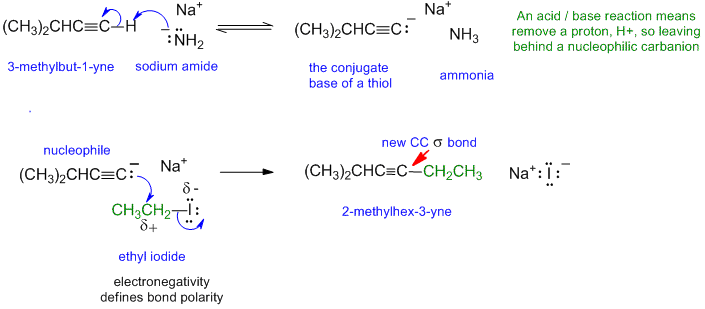
If you struggled with this part of the question, first draw the compounds whose names were provided, then think about the types of reactions (e.g. acid / base) and try to fill in the structures in the gaps, then finally add the required curly arrows to account for all the bonding changes.
b. i. The reaction will not work. Sodium hydroxide (NaOH) has a corresponding pKa = 14 and therefore is not a strong enough base to deprotonate a terminal alkyne (pKa = 25).
ii. The reaction will not work. In order to deprotonate an alkyne, it needs to be terminal. 4-methylpent-2-yne is an internal alkyne and therefore is not deprotonated to give the required nucleophile.

iii. This reaction looks like it will work (see below). There are a couple of ways to envisage making the molecule depending which C-C is made. Both are shown (one is the one used is part a above).

c. Draw out the required product and compare with the mechanism scheme based on the terminal alkyne. A reasonable answer would be to use propyne to react with the base (sodium amide) and then add 1-iodo-3-methylbutane, or, as an alternative, react 5-methylhex-1-yne with sodium amide and then add methyl iodide.
Common errors:
a. i. Curly arrows backwards (always e- rich to poor), missing formal charges. ii Removing the wrong H from the alkyne iii. Attacking the wrong C atom in ethyl iodide (the Nu attacks the C with the I attached, I is the leaving group).
b. Not knowing the relative basicity of hydroxide. Not recognising the need for a terminal alkyne. Poor nomenclature, errors from counting C atoms incorrectly, not tracking the alkyne location correctly.